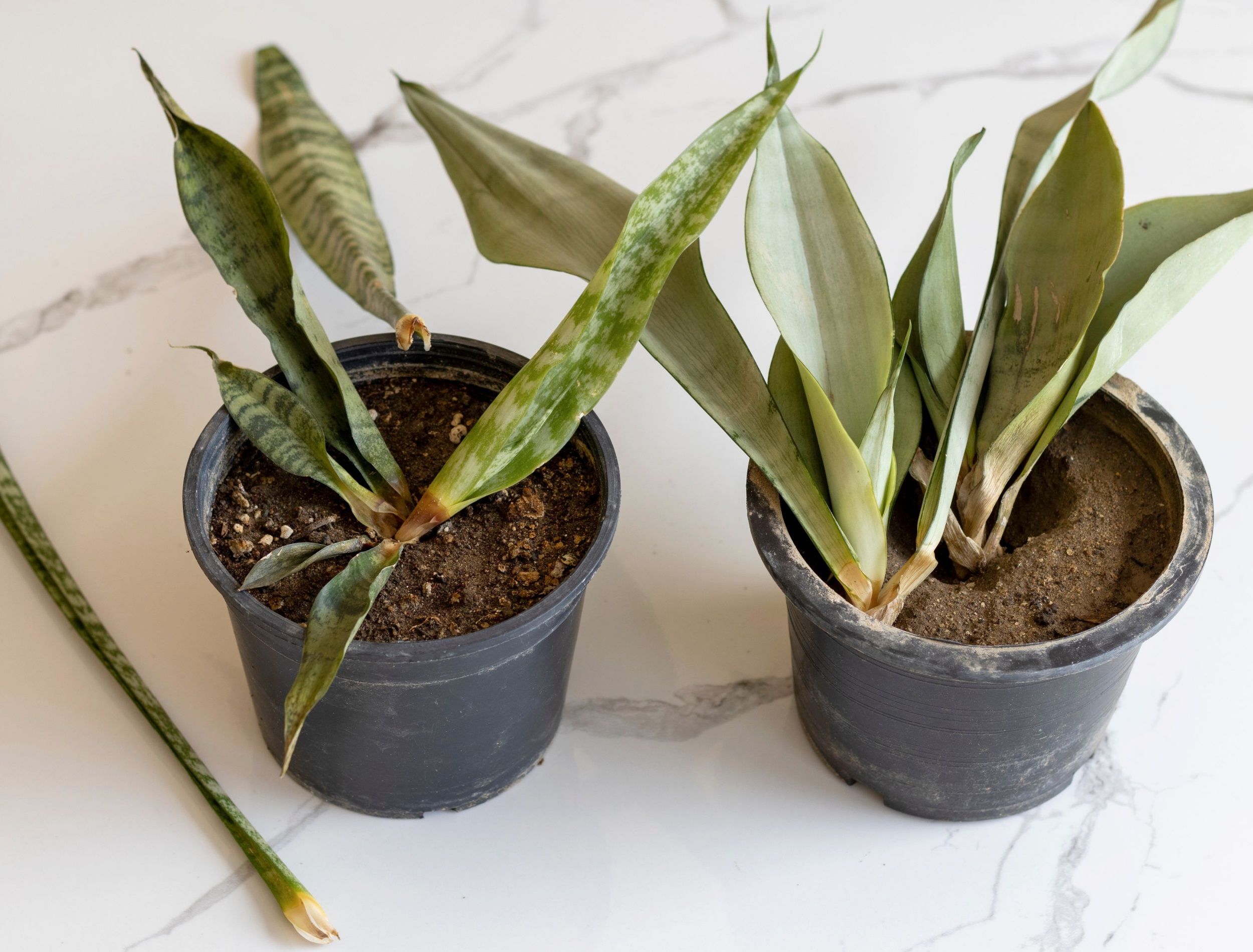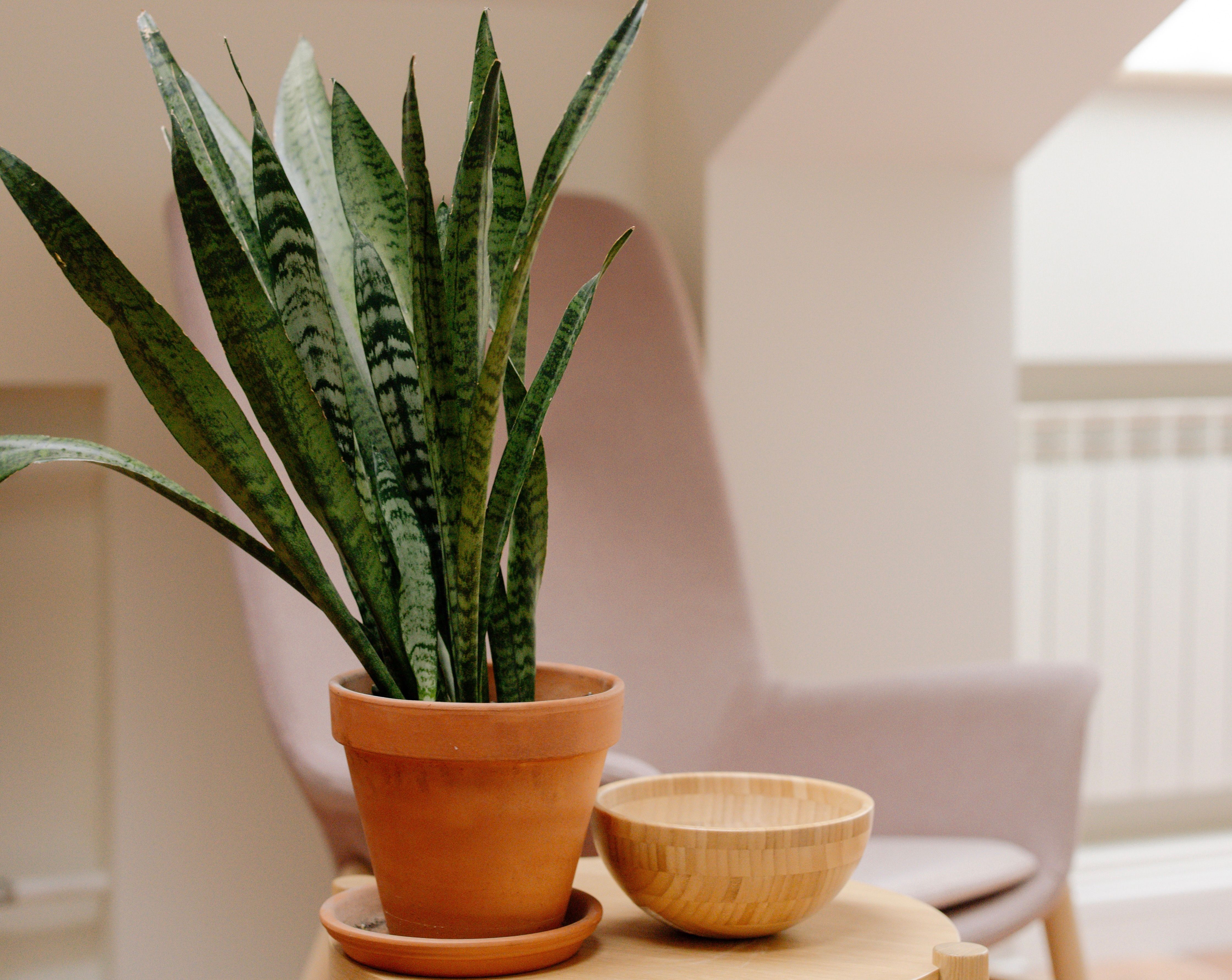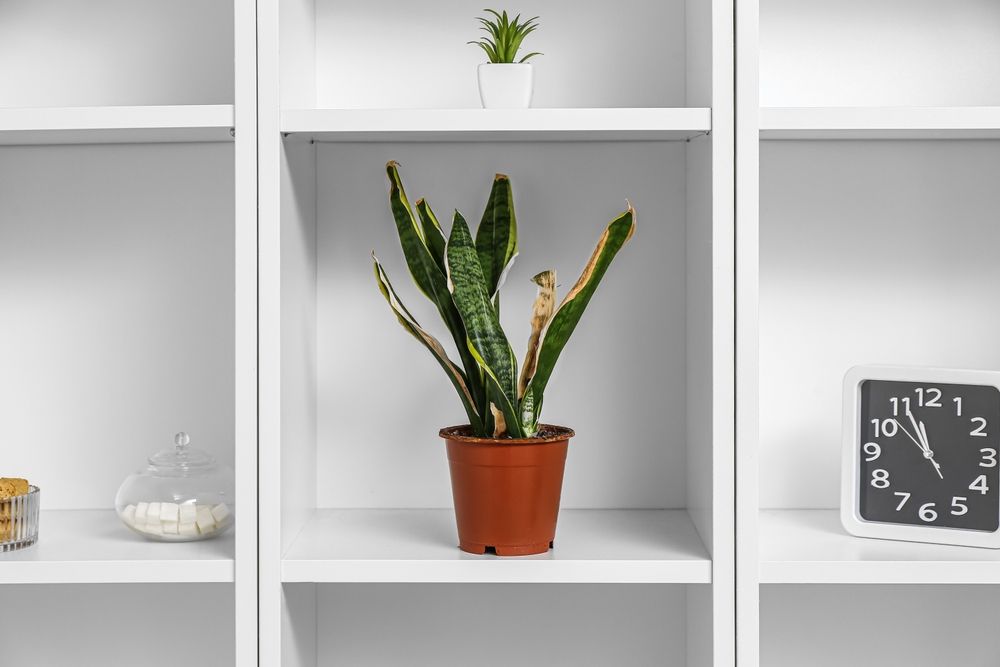Your trusty snake plant is a mainstay of any indoor garden, but have you been noticing that its leaves are falling over? Don't worry – it's not time to give up on your pet snake quite yet!
In most cases, this is simply an indication that your plant needs some TLC. Keep reading to find out why your snake plant leaves are falling over and how you can help get them get back on their feet!
Overwatering
Image credits: Cottonbro via Pexels
If your snake plant leaves are falling over, it's most likely due to overwatering. It's important to know how often to water your snake plant so you can avoid this common mistake. These tough plants can go a long time without water, which makes them great for forgetful gardeners. Snake plants are very tolerant of drought but can't handle too much water.
If you overwater them, the leaves may start to feel squishy, turn yellow or black, and will begin to droop.
Watering your snake plant on a weekly schedule can actually do more harm than good. Instead, let your plant dry out between waterings and only give them a drink once the soil is dry to the touch. You can also try using a moisture meter to measure closer to the root ball.
If you live in a hot, dry climate, you may need to water more often. Additionally, if you think your plant is getting too much water, try moving it to a spot with better drainage or use a terracotta pot with drainage holes.
If your plant is deteriorating, remove the plant from the pot. Then, allow your plant to dry out and get rid of any rotten plant matter before repotting. This means trimming any bad roots and removing as much soil as possible. In the future, use a well-draining potting mix to prevent this from recurring.
Potting mixes made for cactus and succulents work wonders with snake plants. You can add perlite to help with aeration, sphagnum peat moss for water retention, and even coconut coir has become popular among gardeners.
Accidentally waterlogging your precious plants can lead to disaster but with a little love and care, your snake plant will be good as new in no time!
Underwatering
Image credits: Pixel-Shot via Shutterstock
This is a less common problem with snake plants, but still worth mentioning.
Underwatering your plant may cause the leaves to turn brown and fall off the plant. But don’t worry, these tough plants can withstand a lot, even a little neglect. These towering plants store water in their leaves giving them the upper hand. But, that doesn't mean you should ignore them.
Check the soil to see if it's bone dry, water your plant thoroughly, then let the soil dry out completely before watering again. If any leaves are beyond saving, you can prune them off - no need to feel guilty, your plant will put all its effort into saving the rest!
Too much or too little water can both cause problems for your snake plant. Be sure to give your plant the proper attention so it can stay healthy and thrive!
Fertilizing
Image credits: Drew Beamer via Unsplash
Another less common reason why snake plant leaves might fall over is due to a lack of nutrients. If you have gotten the hang of watering your snake plant, consider adding fertilizer to your plant every 14 days during the growing season. Since they require almost no fertilizer, it's best to use a weakened liquid fertilizer.
This will help ensure that your plant gets the nutrients it needs to stay healthy and strong. But remember to stop fertilizing during the winter months!
Benefits of A Snake Plant
Image credits: [Rosana Solis] via [Pexels]Native to tropical Africa, snake plants are tolerant of a wide range of growing conditions. They can survive in low light levels and can even tolerate periods of drought. These tough plants are also very difficult to kill, making them ideal for those who do not have a green thumb!
In addition to being virtually indestructible, snake plants are excellent at purifying indoor air. They are effective at removing a variety of toxins from the air, including nitrous oxides, formaldehyde, and xylene. In return, they'll provide pure oxygen for your space.
If you are looking for an easy-to-care-for plant that can also help purify your indoor air, then a snake plant is the perfect choice for you!
Plant Care Is Self Care
So, what's the deal? Why are your snake plant leaves falling over? As you can see, the good news is that this is usually an easy problem to fix. In most cases, it just means that your plant needs a little bit of extra care.
As mentioned above, water your plant regularly – but not too much! Be careful not to overwater them, as this can lead to root rot. And fertilize it sparingly! This will help keep your snake plant healthy and looking its best.
Do you have any tips or tricks for taking care of a snake plant? Leave them in the comments below!





